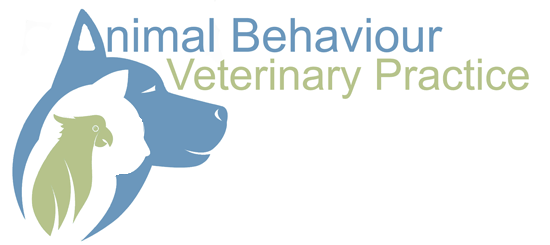There are certain principles that underpin all learning and which we can use whenever we attempt to change behaviour, including human behaviour. Even aversive training methods work within these basic laws of learning, although I want to focus on the more positive methods.
Unfortunately there is no universally accepted definition of learning. But we do know that learning involves some change in behaviour. Without this change we could not say that learning had occurred and the change must persist over time. However whether that behavior is performed or not is also influenced not just by learning but by other factors such as motivation, physical ability, and opportunity. For example in one experiment a mouse placed in a complex maze and left to explore for a few days, wandered about randomly. The mouse was then removed and placed back in a specific spot in the maze with a piece of cheese but not allowed to finish it. The mouse was then placed back in another location in the maze where it promptly made a beeline through the maze to where the cheese was. Although the mouse had learned the layout of the maze in the time when it appeared to be randomly wandering about, what is clear is that the mouse had no reason or motivation to display that learning.
We can see therefore that motivation is a powerful factor in whether a behaviour is performed or not and is something that we as owners need to be able to influence. As one well known behaviourist and trainer Pam Reid said, “Motivation is like the gasoline in your car – without it, your car can’t go anywhere”. Owners also have to consider whether there are competing motivations at times, which may well influence whether an animal performs a behaviour. For example on a walk off-lead, a dog may well come back when it is called, in expectation of a reward but may be less willing to comply if it has a strong predatory drive and it has the opportunity to chase. This is also an example of behaviour being influenced by opportunity.
As we have said there may be physical restraints on whether a behaviour is performed. A puppy may have learned not to pee on the carpet but may not be physically able of controlling itself all the time until it is more physically mature. Similarly your old dog may not be able to respond to your command to “sit” because it has arthritis.
The scientific study of how animals learn grew out of studies carried out by psychologists who used animal models to study human learning as well as those of ethologists (behavioural biologists) who began to recognise that not all animal behaviour was innate or instinctive but was learned. We all know about the experiments carried out by Pavlov and the dogs that were conditioned to salivate at the sound of a bell. This type of learning is best known as classical conditioning but also as associative learning. This is the type of learning that occurs when the animal makes an association between events – when this happens another thing happens shortly afterwards. For example you bring the lead out and your dog will get all excited because it has learned that one event follows the other. There is a predictable relationship between the two and the dog responds to the first event in anticipation of the second.
The second type of learning is called instrumental learning or operant conditioning. This occurs when the animal learns that its behaviour has consequences. For example if you ask your dog to sit and he doesn’t, he doesn’t get a treat. The observation that the consequences of a behaviour determine whether the behaviour will occur again led to what is called Thorndike’s Law of Effect. If a consequence is pleasant, the preceding behaviour becomes more likely. If a consequence is unpleasant, the preceding behaviour becomes less likely. We can understand this even in terms of our own behaviour and it makes a lot of sense.
We can apply instrumental learning in four ways. Positive reinforcement and negative reinforcement increase the likelihood that the behaviour will occur again whilst positive punishment and negative punishment decrease the likelihood that the behaviour will occur in the future.
Good dog training is based on methods that incorporate positive reinforcement and involves adding a good consequence when a behaviour is performed. An example of this is asking your dog to “sit” and then giving him a treat.
This involves removing a good consequence when the behaviour is performed, for example not rewarding with a treat if the dog lies down when you have asked it to “sit”.
As far as the dog is concerned positive and negative reinforcement are both good, the first in that the dog receives something good and the second because something aversive is removed. Both results in the behaviour being more likely to occur in the future.
Positive and negative punishment from the dog’s perspective is bad and so the behaviour is less likely to occur in the future.
Although all of these methods are used in training, the use of aversive methods such as positive and negative punishment are fraught with the possibility of damaging consequences to the animal. Exposing animals to these techniques produces emotional side-effects that in themselves affect learning and because they are usually applied in an inconsistent manner, using them affects both the rate and extent of learning. If you make a mistake applying positive reinforcement the worst thing that might happen is that you might overdo the treats and end up with a plump dog or you may fail to get the behaviour you want . However, wrong or inappropriate application of aversive techniques, particularly physical punishment, may result in the animal becoming completely traumatized or injured and leads to a loss of trust and a breakdown of the human-animal bond.
The other drawback in using physical punishment is that whilst it may stop a behaviour that you don’t want, this is usually only in the short-term, firstly because we don’t bother to work out why the animal is behaving in a certain way and secondly because we have not taught the dog an alternative positive behaviour. Also in order to control the behaviour, we often have to resort to increasingly harsh levels of punishment.
I once knew a trainer whose method for dealing with an aggressive dog was to repeatedly string it up by its collar until it virtually passed out every time it exhibited aggressive behaviour. Not only did this kind of positive punishment not stop the behaviour, it actually made it worse as from the dog’s perspective the treatment only reinforced his belief that all humans were violent and unpredictable and it had to protect itself.
But when we choose to apply the laws of learning based around positive reinforcement we can achieve our aims more quickly, more efficiently and without the distress that often accompanies old fashioned and now discredited training methods. Remember a dog is more likely to respond in the way you want if the consequences are pleasant. More about the technique of positive reinforcement next time.


Leave A Comment